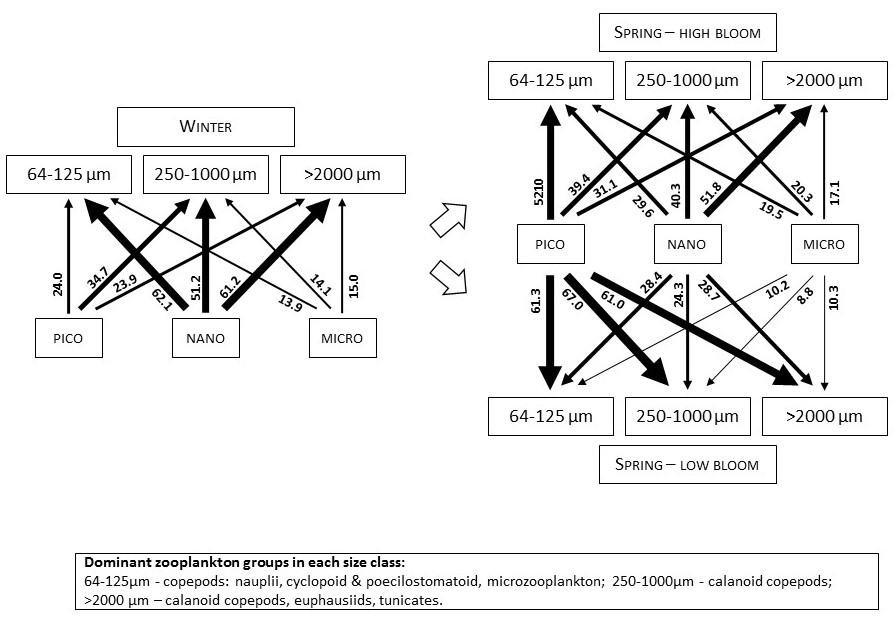Biochemical tracers show that microphytoplankton (diatoms) never contributed more than 20% to zooplankton biomass in the Gulf of Lion (Mediterranean), even during diatom blooms. In contrast, picophytoplankton contributed 25-65% to zooplankton biomass.

The grazing of zooplankton on algal phytoplankton is a critical step in the transfer of energy through all ocean food webs. Although microscopic, phytoplankton span an enormous size range. The smallest picophytoplankton are generally thought to be too small to be directly grazed by zooplankton, resulting in less efficient energy transfer through the food web. This has implications for our future oceans where warming and lower nutrient supply are predicted to favor picophytoplankton over the larger nanosize and microsize classes. We tested the importance of phytoplankton size classes in the transfer of energy to zooplankton in the north-west Mediterranean Sea, where conditions naturally result in contrasting regions of small and large phytoplankton dominance. Contrary to expectation, biochemical tracers showed that microphytoplankton never contributed more than 20% to zooplankton biomass, even in regions where microphytoplankton were plentiful. On the other hand, picophytoplankton contributed 25–65% to zooplankton biomass. This finding indicates that there are well-established food-web pathways from picophytoplankton to zooplankton, and that these pathways play an important role even in ocean regions where microphytoplankton dominate. Accordingly, a decline in phytoplankton size classes may have a greater effect on carbon sequestration than on food-web productivity.
Read more here: http://onlinelibrary.wiley.com/doi/10.1002/2016JC012658/abstract